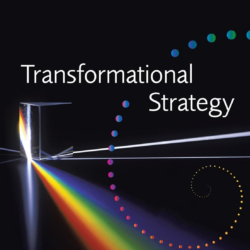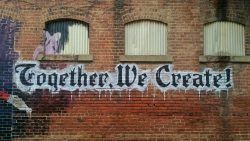Interpretive: Exploring Options and Looking for Patterns
Western society often uses critical thinking as a tool to understand and move toward decisions. There are strengths in this method, as it can unearth weaknesses and clarify gaps. Unfortunately, we often reduce this to “criticism thinking”, and spend meeting time on arguing rather than looking for wisdom and finding the best solution. It’s a hard habit to kick.
Building on the stages described in the past two newsletters about facts and reactions as steps in guiding a group to consensus, the interpretive stage is where serious understanding and consensus begin to emerge.
Once the facts of a situation are shared and acknowledged, and people’s internal reactions and associations to the facts are on the table, it is time to move to looking for common insight, exploring the implications of the situation, and exploring options. This is also where real critical thinking, which thoughtfully weighs up the weaknesses of an option or idea as well as its strengths, is useful.
There are lots of facilitation tools that can be used at this level to help guide thoughtful exploration of underlying issues, options and implications.
Many times a simple focused conversation with well-tailored interpretive questions can guide the group through this thinking.
For more complex topics or for variety, our “Meeting Tools” compilation of methods lists 36 different tools for this stage. Several of these tools suggest different ways of clarifying the underlying problem before asking questions about solutions.
For example, Roger Schwarz, in The Skilled Facilitator, in 2004 suggested systematic problem-solving in this way:
Identify the problem, establish criteria for evaluating the solutions, identify root causes, generate alternative solutions, evaluate and select a solution, develop an action plan, implement and evaluate.
Doyle and Strauss suggest this tool in How to Make Meetings Work from 1973:
List the consequences of solving and not solving a problem in six columns: What is the best consequence of solving this problem? The best consequence of not solving this problem? The worst consequence of solving the problem / not solving the problem? Most probable consequence of each? You could put each of these on a separate flipchart, and have the group walk around the room writing answers to each. Then lead a discussion of the results. In this way, the different perspectives can be explored without a direct connection to the person saying them, which allows a more dispassionate and thoughtful discussion of the options.
Or you could use Model Building as Priscilla Wilson described it in The Facilitative Way in 2003:
First identify together the constraints or values each model must consider. (This can be done using the Consensus Workshop Method.) Then ask people to work in small teams to create an image or plan of what is needed, including elements, steps, time frames, people involved, etc. Have groups present their models visually, then clarify them, and discuss how each model addresses the constraints and values, and the implications of each model. Look for the common patterns and the unique insights in each to put together one model the group can support.
These tools allow critical exploration of the strengths and weaknesses of possible results without falling into direct conflict.
In our Meetings that Work course, there is an in-depth exercise to explore a wide range of facilitation tools. Also, the IAF Methods Database has an extensive list of methods suggested by IAF members.
Here are some notes on the Interpretive Level from Getting to the Bottom of ToP, by Wayne and Jo Nelson.
Level 3, the INTERPRETIVE Level, addresses meaning, values, solutions and implications. At this stage, both the external data from the objective level and the internal responses from the reflective level become valuable sources of information that help people understand the meaning of a situation or phenomena. Now the intentional focus is about directing our consciousness toward deriving meaning and significance from the external and internal information we have acknowledged in the first two levels. Radical openness at this level is about exploration of possible connections and meanings. This is where specific methods of inquiry are useful to move towards the aim of the conversation.
The interpretive level of the conversation can involve several elements.
Understanding
Questions of understanding might introduce the interpretive stage. Examples might be “How did this come about?” or “What are the key points of this paper?” Answers at this level are beyond observation alone, and begin to pull together a comprehensive understanding of the topic.
Reference points
Questions might ask participants to articulate their relationship to past events, attempts, knowledge, resources or accomplishments. They might also include comparisons or connections between elements, or to other topics. This stage contains an element of learning, of making new connections to previous experiences.
Exploring meaning and significance
At the heart of the interpretive level are questions of meaning and significance, such as “What implications does this have for us?” “What implications does this have beyond ‘us’ to the larger context?” “What is the importance of this situation?” “What can we learn from this situation?” “What are the positives and negatives of each option?” Sometimes a question such as “What message might this story have for our situation?” draws out profound insight into the meaning of life.
Purpose and intention
Here questions begin to elicit the “Why” of the situation, such as “Why did this happen?” or “Why would we go in a certain direction?” They may elicit the relationship of a particular proposal to the mission of the organization, or the possible positive and negative impacts of a possible strategic direction.
Toward the future
This stage begins to bridge to the decisional level of the conversation. Questions may elicit lists of options, opportunities or possible solutions. In the case of options, it can be useful to explore the meaning and significance of each option before moving to the next level.
These books will give you a deeper understanding and provide templates for conversations on a variety of topics.
The Art of Focused Conversation, by Brian Stanfield
The Art of Focused Conversation for Schools, by Jo Nelson
Getting to the Bottom of ToP, by Wayne and Jo Nelson





